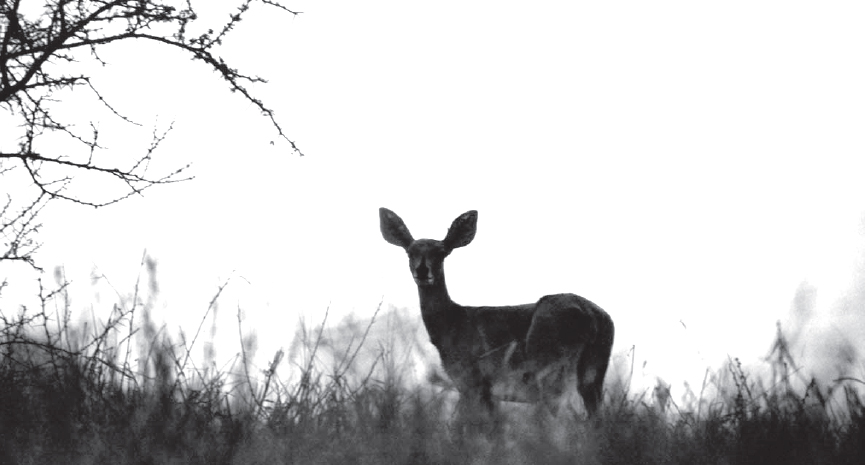Wildlife rehabilitation is a profession involving the treatment and care of sick, injured or orphaned wild animals with the goal of releasing them back to their natural habitats in the wild. For rehabilitation to be deemed successful released animals must be able to survive on their own and be an integral part of their species population, i.e., recognize and obtain appropriate foods, select mates of their own species to reproduce, and respond appropriately to potential dangers (people, cars, dogs, natural predators, etc.).
Those animals who sustain injuries or illnesses that prevent them from living successfully in the wild are humanely euthanized to end their suffering. Wildlife rehabilitation is not an attempt to turn wild animals into pets. Patients are held in captivity only until they are able to live independently in the wild.
Federal law protects all birds and state laws additionally protect most other kinds of wildlife. To work with mammals, reptiles, and amphibians, wildlife rehabilitators and wildlife rehabilitation centers must be issued special permits from state wildlife agencies. Before receiving their permits they must meet various requirements, such as specialized training, participation in mentorship programs, facility inspections, and written or oral exams. Rehabilitators who wish to care for native birds must also get permits from the U.S. Fish and Wildlife Service. It is illegal for people to attempt to rehabilitate a wild animal without the appropriate permits.
Rehabilitation is often a complicated and time-consuming process. Although the work can be stressful and demanding, the reward is to see an animal recover and return to a wild, free life. Best of all, it provides the opportunity for environmental education, which, in turn, helps wildlife on a much larger scale.
Wildlife rehabilitators work under a veterinarian’s guidance to assess injuries and identify a variety of illnesses, and must be able to administer basic first aid and physical therapy. Because wild animals are so different from domestic animals, rehabilitators need extensive knowledge about the species in their care, including natural history, nutritional requirements, behavioral issues, and caging considerations.
They also need to understand any dangers and diseases the animals may present to rehabilitators, and how to safely handle and restrain wildlife under care. Many of the skills involved in wildlife rehabilitation are learned through hands-on experience. Volunteering for a rehabilitation center and participating in an intern program are two ways to help develop these skills. A course of study in ecology, wildlife biology, zoology or veterinary medicine is also recommended.
Because of their training, wildlife rehabilitators can help concerned people decide whether an animal truly needs help. Young birds and mammals should be returned to their families if at all possible. Even well-trained rehabilitators are not equivalent replacements for biological parents. Rehabilitators can provide instructions for how to reunite wildlife families, keeping the safety of the animals and the rescuers in mind. They can also suggest humane, long-term solutions when conflicts arise between humans and their wild neighbors.
Once they receive their permits, responsible rehabilitators continue their education by attending conferences, seminars, and workshops, by keeping up with published literature, and by networking with others in the field.
What happens when an animal goes to a center?
The animal is typically taken immediately from the reception area to an examination room and you will be asked to remain in the lobby to complete paperwork about the animal (where and when it was found, any prior care received, etc.). Sharing details of the animal’s condition and how you found it will greatly assist in assessment and care of the animal.
What happens next?
Unless there are severe injuries requiring immediate treatment, an animal will be allowed to de-stress for a period of time prior to conducting a full examination. This increases its chance of survival. To reduce stress, human contact must be kept to a minimum.
Follow-up care: The results of the initial analysis determine the following protocol
- Immediate release – Although unusual, some animals can be released within twenty-four hours after observation and/or minor treatment.
- Short-term care – Animals needing this care may have minor injuries or infections or need medications and are housed at either the Wildlife Center or home care volunteer sites for several weeks prior to release.
- Long-term care – Easily-stressed species needing greater isolation or animals needing care extending beyond daily operating hours are placed with home-care volunteers. All other animals are cared for at a rehab center.
Can I watch this process?
Most wildlife centers operates under state and federal permits and must adhere to strict requirements pertaining to interaction between members of the public and the wildlife in their care. For these reasons, members of the public are not allowed into the examination and treatment areas. In addition, it is best to limit human contact with wildlife so that the animals remain “wild” when released.
Who requires long-term care?
- Orphans – Many babies are brought in who have been separated from their parents. These young animals must go through their growth cycle until they are old enough to care for themselves.
- Serious injuries or infections – Some compound fractures or complicated systemic infections require a lengthy healing process.
- Severe emaciation – Often, animals brought in have been unable to obtain food for themselves due to injuries. They may need attention not only for immediate injuries, but also long-term care to allow themselves to be re-nourished.
What steps are taken to release an animal?
Prior to release, each animal is assessed to ensure its ability to survive in the wild. The animal must be in good physical condition and possess skills necessary for survival. For example, squirrels must be able to crack nuts and build nests.
All animals are released in their appropriate habitat, which meets the conditions required for that species. In accordance with Fish and Game laws, mammals must be released within three miles of where they were found.
What happens to animals that can’t be released?
Unfortunately, all are not able to be saved. Some animals are so badly injured that their eventual recovery and release into the wild is not possible. These animals are humanely euthanized. If this is the fate of an animal you found, your efforts were not in vain. Your care has allowed an animal to have a quick and painless end, rather than prolonged suffering.
Why can’t I do this at home?
- It is illegal – With few exceptions, it is illegal for the public to care for wild animals or to keep them as pets. This is for the animal’s well being as well as your own. A Wildlife Center is licensed to care for wildlife through the U.S. Fish & Wildlife Services.
- Specialized diet – Each animal has specific dietary needs. Diets vary not only by species, but also by the age and the physical condition of the animal. Animals in our care are constantly re-assessed as they age and/or heal to ensure their diets are appropriate.
- Imprinting & Socialization – Young animals need to be raised with their own kind for socialization purposes. Even animals that spend their adult lives as solitary animals must be raised in a group in order to learn life skills and how to interact and identify members of their own species.
- Peace & quiet – Many animals, particularly as they become older, become highly stressed around humans, whom they view as predators. It is imperative that they be kept in quiet areas.
- Maintaining wild instincts – Human-animal interaction must be restricted to the minimum necessary to care for the animal. If animals lose their natural caution around humans and become tame, they may lose their ability to survive in the wild where they belong.
- Education – Animals raised as orphans must be taught certain life-skills before they are ready for release, such as how to obtain appropriate food. This requires a knowledgeable caregiver who is able to provide an enriched environment for this learning.
- Zoonotic diseases – Some wild animals can be host to organisms causing diseases such as aspergillosis, lyme disease, salmonellosis and hantavirus.





